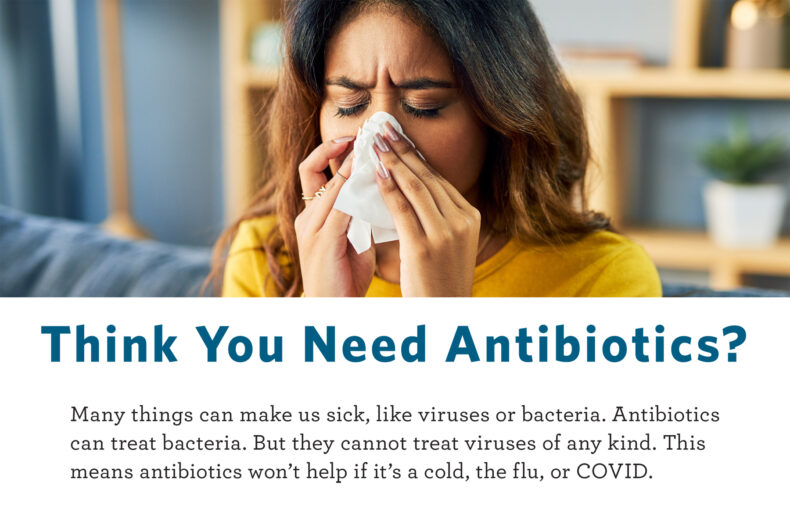Every day, antimicrobial medications save lives.
But this class of medicines, which includes antibiotics, can cause more harm than good when overused. That overuse can lead to antimicrobial resistance (AMR).
“Antibiotic-resistant infections impact real patients that we take care of in our health care setting,” said Ritu Banerjee, MD, PhD, professor of Pediatrics and medical director of the Pediatric Antimicrobial Stewardship Program at Monroe Carell Jr. Children’s Hospital at Vanderbilt. “It’s not just scary superbugs people read about. Our patients are being affected, and we are seeing an increasing awareness on the part of patients and health care providers about the harm of overusing antibiotics.”
For 17-year-old Maddie Wright, AMR impacts every aspect of her life.
Her story is a part of a documentary, “Holobiome,” a multipart film created by Michael Graziano and funded by the Novo Nordisk Foundation that explores the past, present and future relationships with antibiotics.
Leanne Wright, Maddie’s mother, refers to her daughter’s antibiotic resistance as a double whammy — she was born at 30 weeks and diagnosed with cystic fibrosis (CF), a genetic disease that causes the body to produce thick mucus that can lead to breathing and digestive issues. At age 4, she was diagnosed with liver disease, caused by her CF.
Infections have been a constant concern.
“People living with CF deal with antibiotic resistance all the time because they have to have dual coverage for each bacterium,” said Wright. “Maddie has intolerances to many of those medications. And then there’s the liver transplant. She had complications after transplant, developed some infections, and we learned she had a lot of reactions to IV antibiotics. We became really limited to what was effective.
“Maddie literally has one antibiotic she can take to cover infections for her liver. That’s real. I think it’s more of an abstract idea until you are facing it.”
AMR can affect anyone, anywhere, and at any stage of life. Antimicrobial-resistant germs can spread rapidly across the globe in and between health care facilities, as well as in the community, environment and food supply.
AMR is one of the world’s top 10 global health threats.
The Centers for Disease Control and Prevention reports that more than 2.8 million Americans become ill with AMR infections each year, according to a technical report in Pediatrics written by Banerjee and co-author Sophie Katz, MD, assistant professor of Pediatrics, Infectious Diseases at Monroe Carell.
The report, “Use of Antibiotics in Animal Agriculture: Implications for Pediatrics,” highlights that the majority of antibiotic sales are for use in farm animals.
Evidence supports a link between antibiotic use in food-producing animals and the occurrence of antibiotic-resistant infections in humans, according to the report.
“There have been a lot of changes over the last few years making antibiotic use in farm animals more restricted, and that is good,” said Banerjee, who holds the Directorship in Pediatrics. “Health of the environment, health of animals and the health of humans are all linked. We need to take care of all three sectors to combat the resistance problem.”
Antibiotic Awareness Week in 2024 will be held Nov. 18-24.
The theme, “Fighting Antimicrobial Resistance Takes All of Us,” emphasizes the One Health approach, which recognizes the connection between human, animal, plant and environmental health.
Teams at VUMC and Monroe Carell are engaged in antimicrobial stewardship programs that provide oversight of antimicrobial therapies for both inpatient and outpatient populations. Banerjee said it’s all about evidence-based medicine — using the right drug for the right infection at the right time and for the right duration. The Vanderbilt Antimicrobial Stewardship Program (VASP) tries to share the message of correct dosing, appropriate use of antimicrobials and diagnostic testing throughout the Medical Center and clinics.
During Antibiotic Awareness Week, VASP is planning educational activities for trainees and faculty to raise awareness about the importance of using antimicrobials wisely. Patients waiting to see their health care providers can also view a short film in the waiting room reminding them that antibiotics do not treat viral infections and can cause harmful side effects.
The documentary highlighting Maddie’s story is showing across the country and can be found on the Novo Nordisk Foundation website.
“The documentary makes you take a step back and see the bigger picture,” said Wright. “Putting a face to the issue makes it real, and perhaps more people will pay more attention to it. Bacteria are smart, and they mutate. It gives you a different perspective of how misusing antibiotics can impact bacteria.”


















